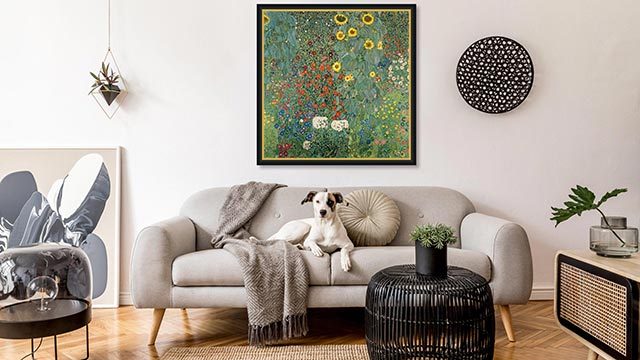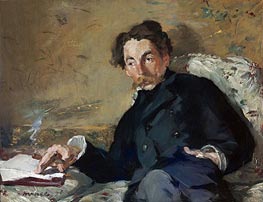The Blonde with Bare Breasts, 1878 by Edouard Manet
Canvas Print - 13644-MED
Location: Musee d'Orsay, Paris, FranceOriginal Size: 62 x 52 cm
Giclée Canvas Print | $64.95 USD
Your Selection
Customize Your Print
By using the red up or down arrows, you have the option to proportionally increase or decrease the printed area in inches as per your preference.
*Max printing size: 41.3 x 33.8 in
*Max framing size: Long side up to 28"
"The Blonde with Bare Breasts" will be custom-printed for your order using the latest giclée printing technology. This technique ensures that the Canvas Print captures an exceptional level of detail, showcasing vibrant and vivid colors with remarkable clarity.
Our use of the finest quality, fine-textured canvas lends art reproductions a painting-like appearance. Combined with a satin-gloss coating, it delivers exceptional print outcomes, showcasing vivid colors, intricate details, deep blacks, and impeccable contrasts. The canvas structure is also highly compatible with canvas stretching frames, further enhancing its versatility.
To ensure proper stretching of the artwork on the stretcher-bar, we add additional blank borders around the printed area on all sides.
Our printing process utilizes cutting-edge technology and employs the Giclée printmaking method, ensuring exceptional quality. The colors undergo independent verification, guaranteeing a lifespan of over 100 years.
Please note that there are postal restrictions limiting the size of framed prints to a maximum of 28 inches along the longest side of the painting. If you desire a larger art print, we recommend utilizing the services of your local framing studio.
*It is important to mention that the framing option is unavailable for certain paintings, such as those with oval or round shapes.
If you select a frameless art print of "The Blonde with Bare Breasts" by Manet, it will be prepared for shipment within 48 hours. However, if you prefer a framed artwork, the printing and framing process will typically require approximately 7-8 days before it is ready to be shipped.
We provide complimentary delivery for up to two unframed (rolled-up) art prints in a single order. Our standard delivery is free and typically takes 10-14 working days to arrive.
For faster shipping, we also offer express DHL shipping, which usually takes 2-4 working days. The cost of express shipping is determined by the weight and volume of the shipment, as well as the delivery destination.
Once you have added the paintings to your shopping cart, you can use the "Shipping estimates" tool to obtain information about available transport services and their respective prices.
All unframed art prints are delivered rolled up in secure postal tubes, ensuring their protection during transportation. Framed art prints, on the other hand, are shipped in cardboard packaging with additional corner protectors for added safety.
Painting Information
This particular artwork by Manet deviates from his usual style and bears a striking resemblance to Renoir's "Nude in the Sunlight" from 1876, although the lighting on the figure in Manet's painting is even and she is not depicted outdoors.
The color palette employed here is characteristic of Impressionism, distinct from the white, black, and gray tones often found in much of Manet's other works. The woman is portrayed in a state of undress, with a hint of a dress cascading from her arms and a hat adorning her head. The combination of her pink skin tone and the flat green background harmonize beautifully, radiating with luminosity. This effect is partly achieved by the varying thickness of the green paint, allowing the underlying color of the canvas to contribute to the illumination of the painting. The unpainted top left corner of the canvas plays a role in enhancing this effect, reflecting the golden hues of the hat's straw. The red flowers provide a vibrant contrast against the green backdrop.
Within the Impressionist circles, leaving certain areas of the canvas unpainted was not an uncommon practice. Canvases were available in a range of pale to mid-tones, and starting from the 1870s, artists embraced a brighter color palette and sought to capture natural light. Consequently, it became logical to utilize the paler, primed canvases, leveraging the underlying ground to enhance the overall interplay of color and light in the artwork.





















